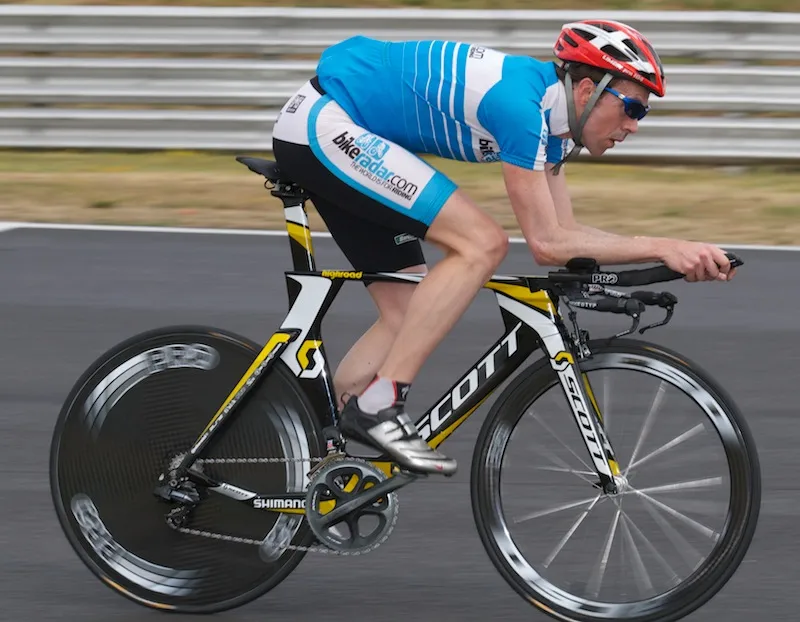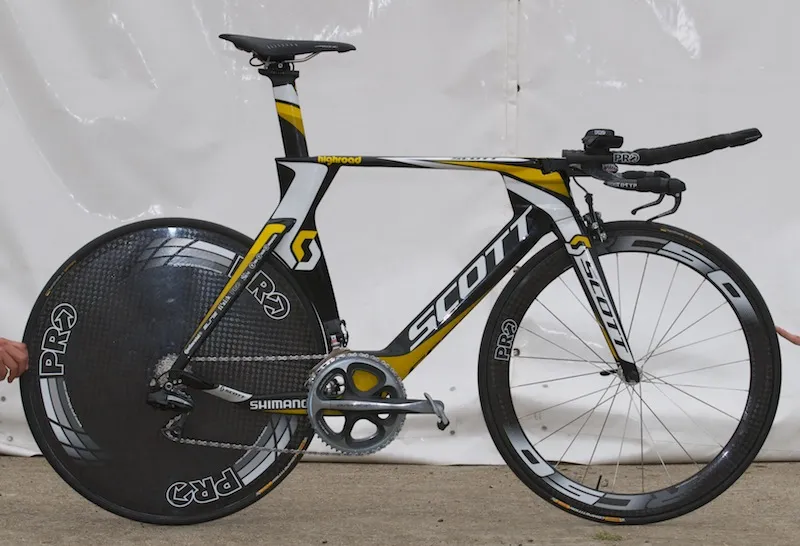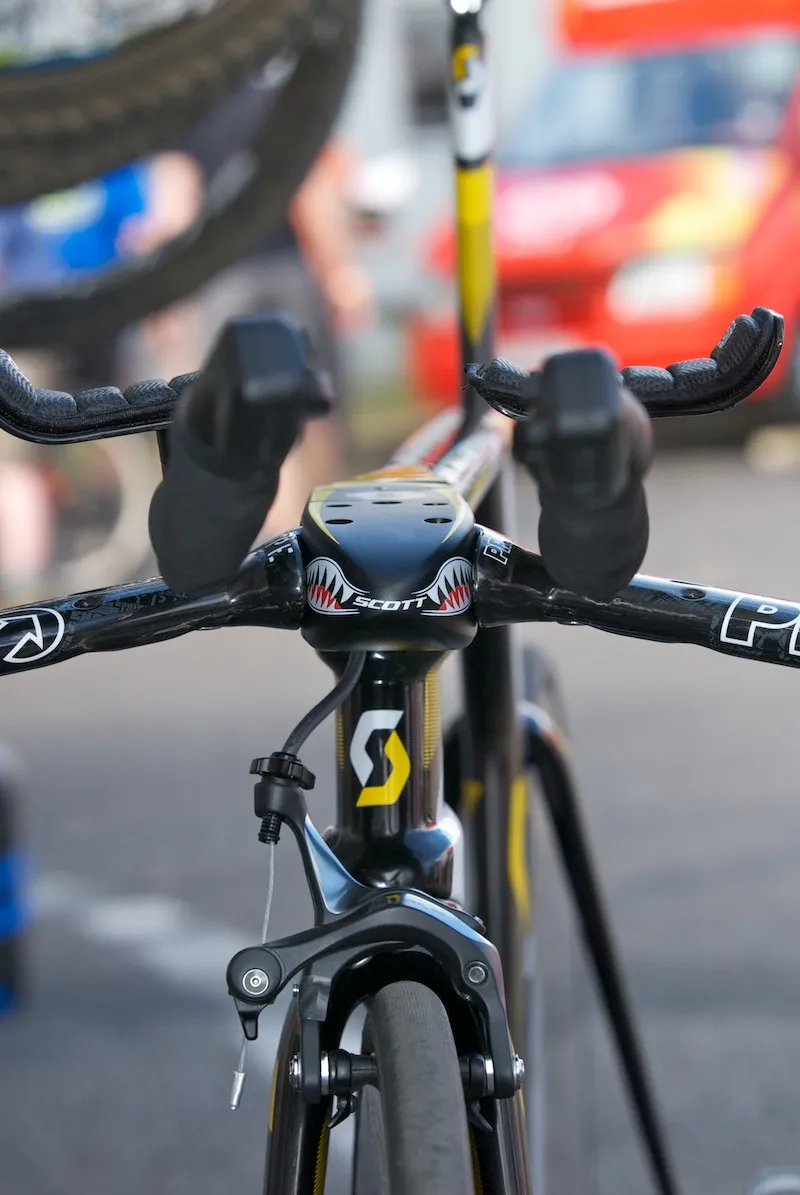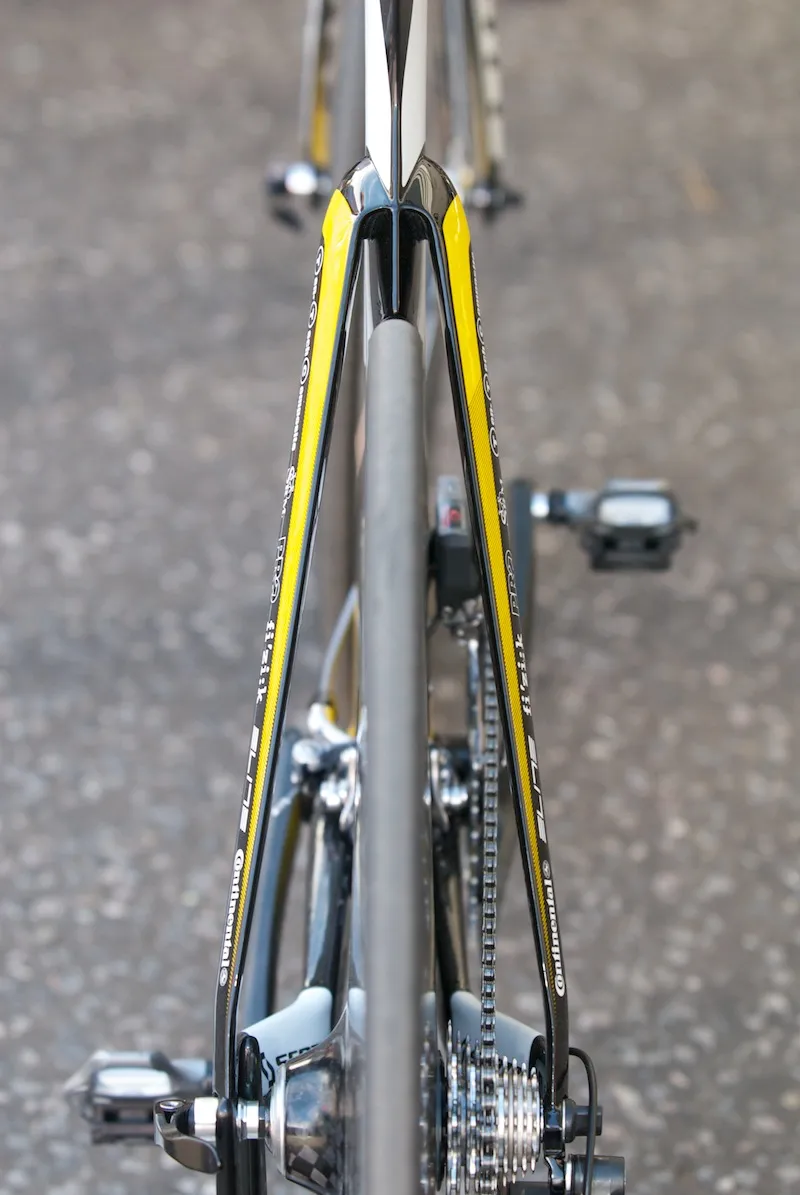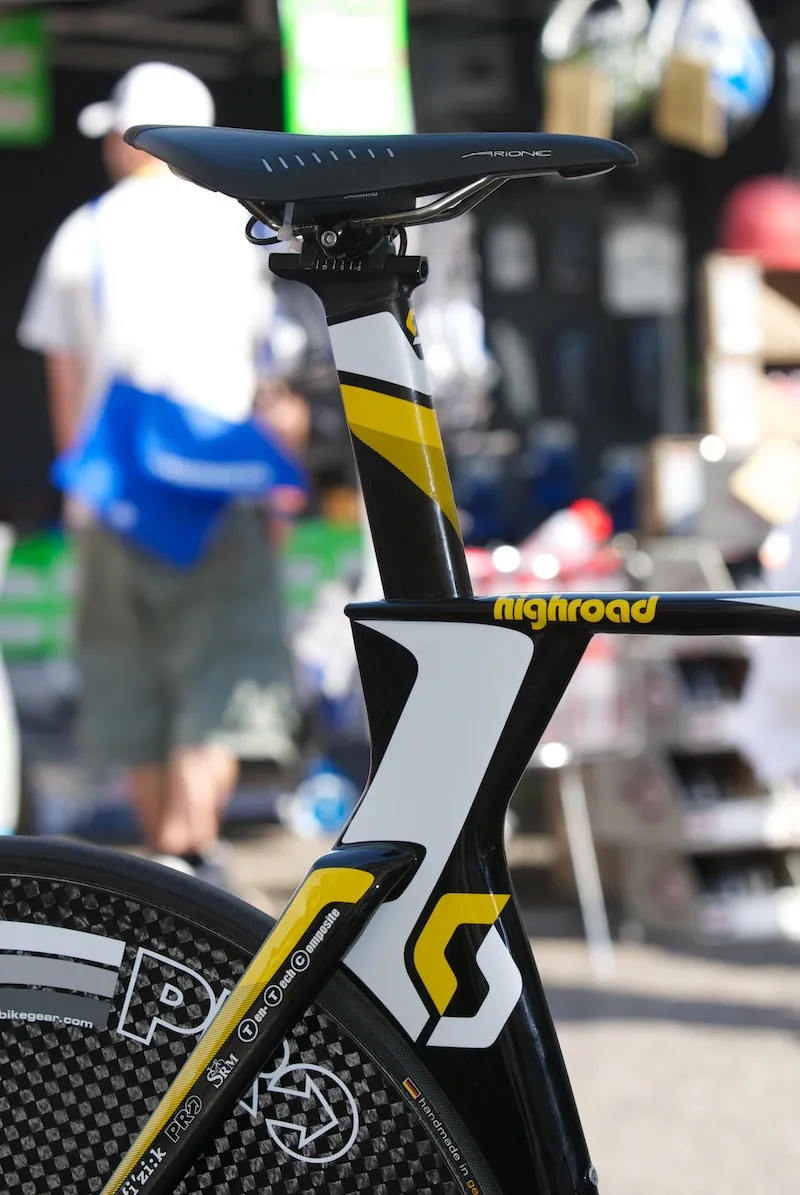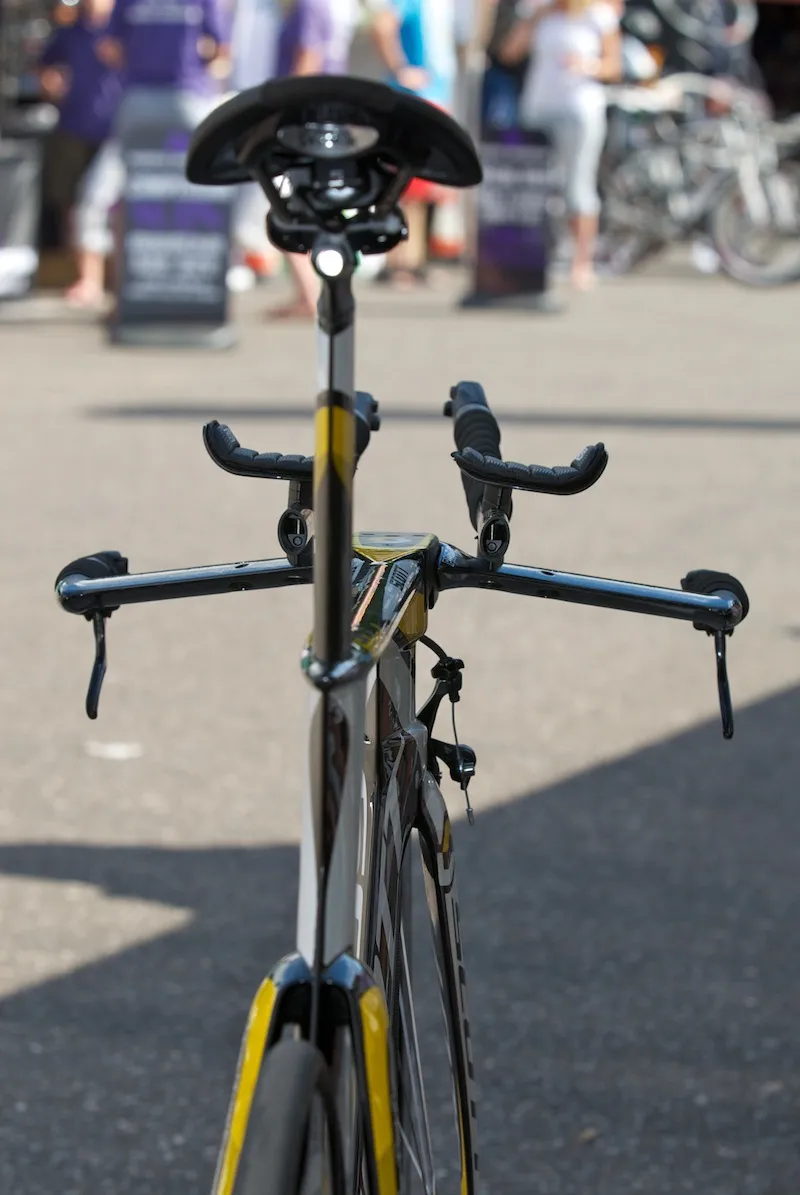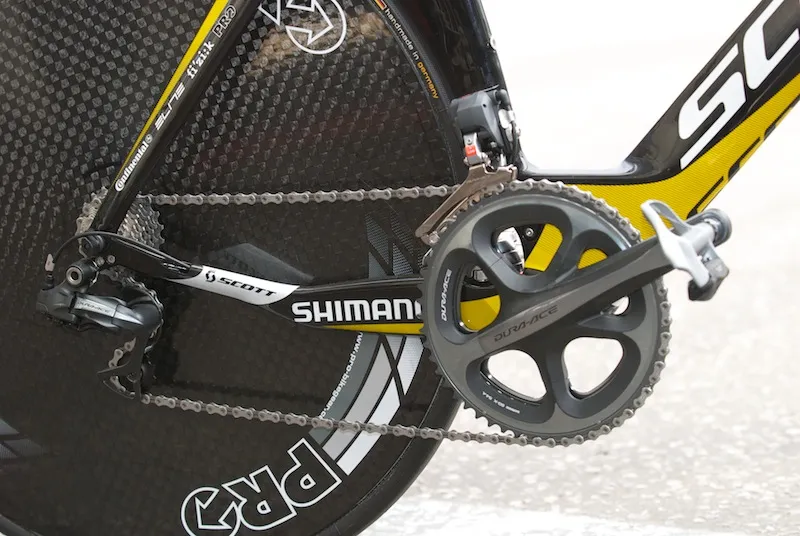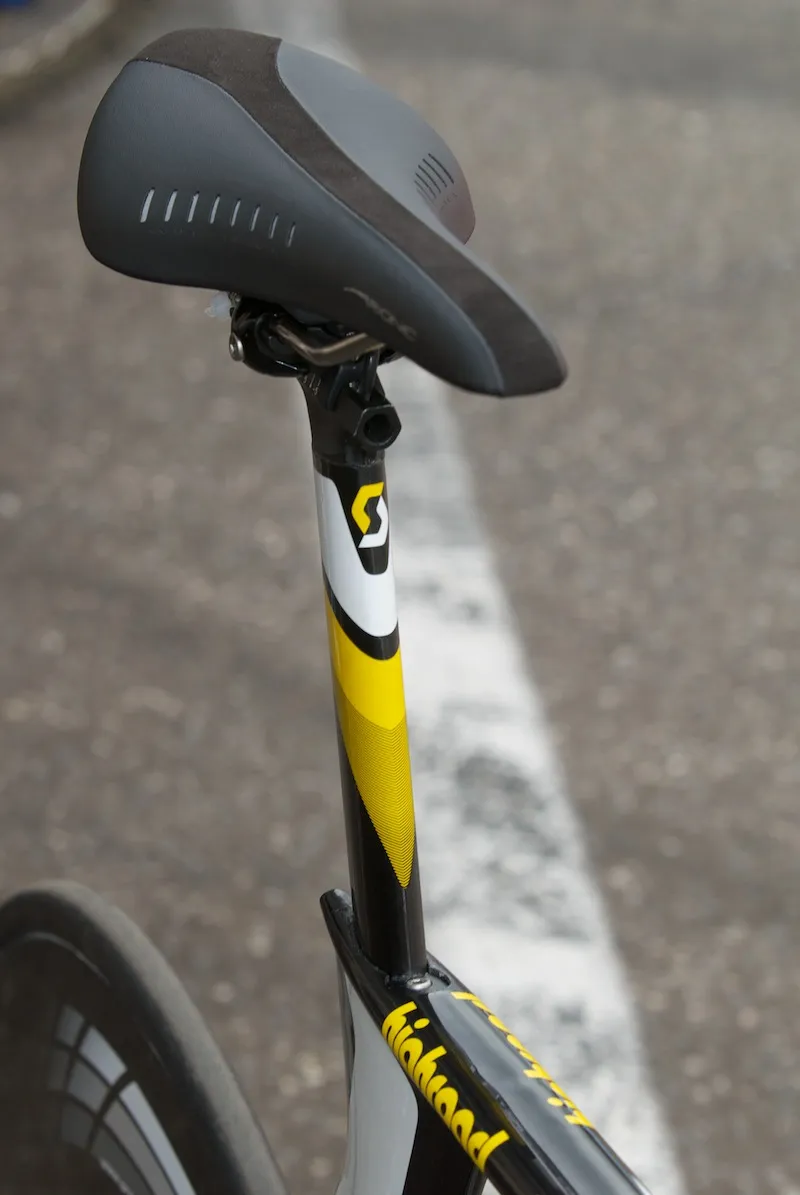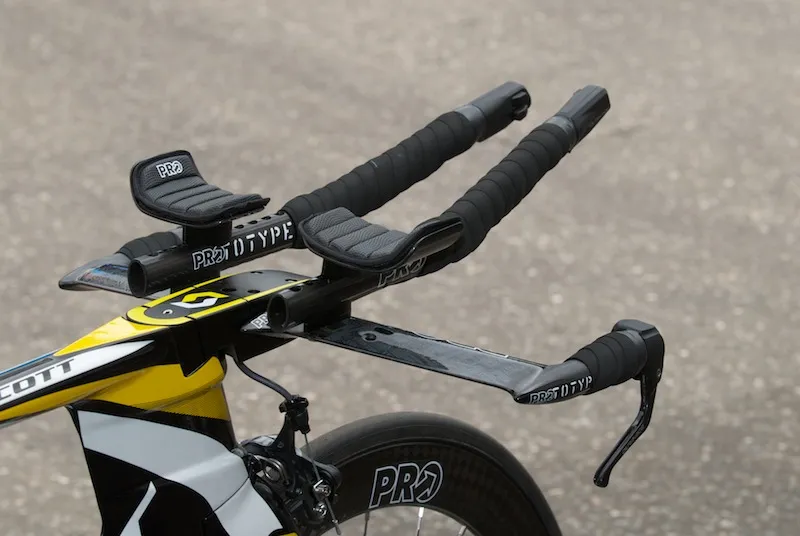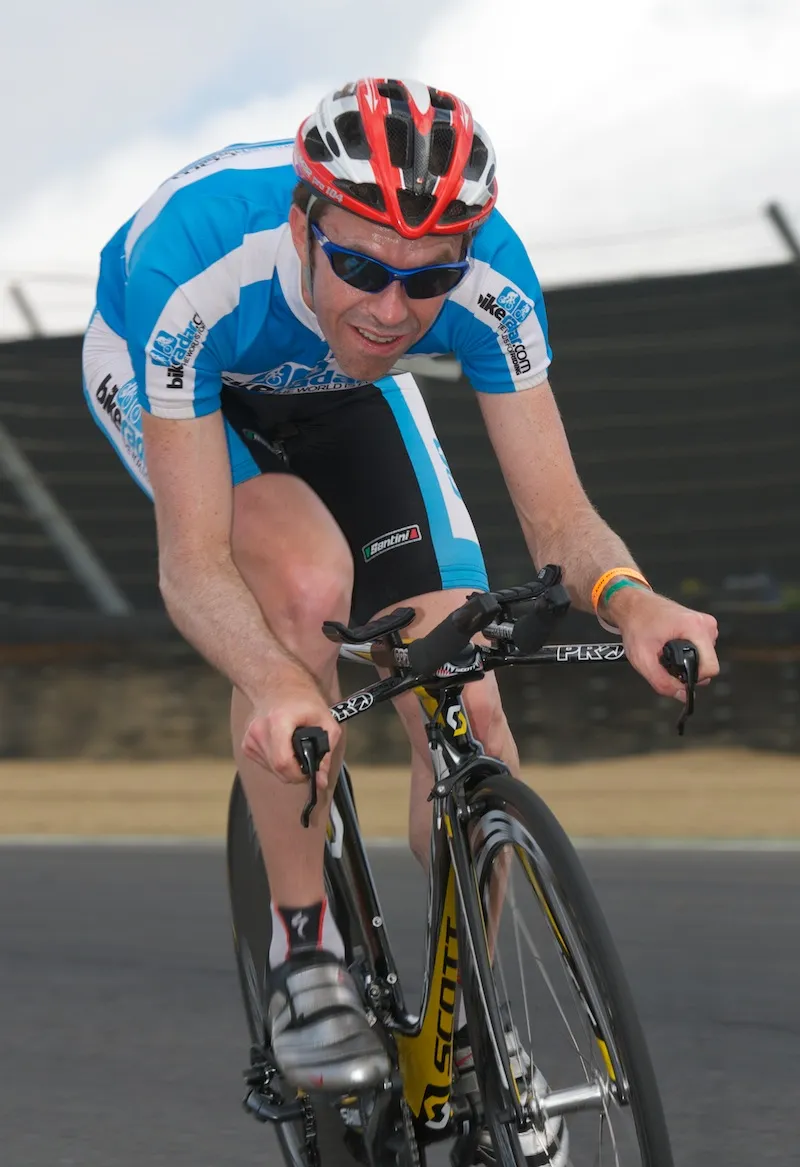This is the Scott Plasma 3 Ultimate – the same bike that the HTC-Columbia team rode in the time trial stages of the 2010 Tour de France.
Scott have only produced 20 of these Plasmas to date, 18 of which are being used by the ProTour team, so we were privileged to see and have a quick test ride on this model at the recent BikeRadar Live cycling festival at Brands Hatch.
Designed with input from former Formula One aerodynamicist Simon Smart of Velo Science, the Plasma 3 will not go on sale to the public until 2011, when we expect it to cost around the £8,000 mark.
Mechanic Martin Ross from Bikelab in Poole built the test machine up with Shimano's Dura-Ace Di2 electronic gears, a PRO rear disk and RC50 front wheel, PRO bars and a Fizik Arione saddle. It took him the best part of a working day, though Scott told us that the HTC-Columbia team mechanic is capable of turning one out in less than half that time.
Why so long? It comes down to the attention to detail and the internal cabling, which is both the blessing and the curse of this bike. In order to reduce drag wherever possible, Scott have hidden just about every cable out of the wind. Add electronic gearing, and you have a mechanic's nightmare.
But once it is set up, you can appreciate the beauty of the design. The brake and gear cables all pass from the handlebars through the steerer and are completely encased by the stem without interfering with the steering. They emerge at various points in the frame with very little external cable needed. The result is that all the mechancal movement on the bike looks like it happens by magic.
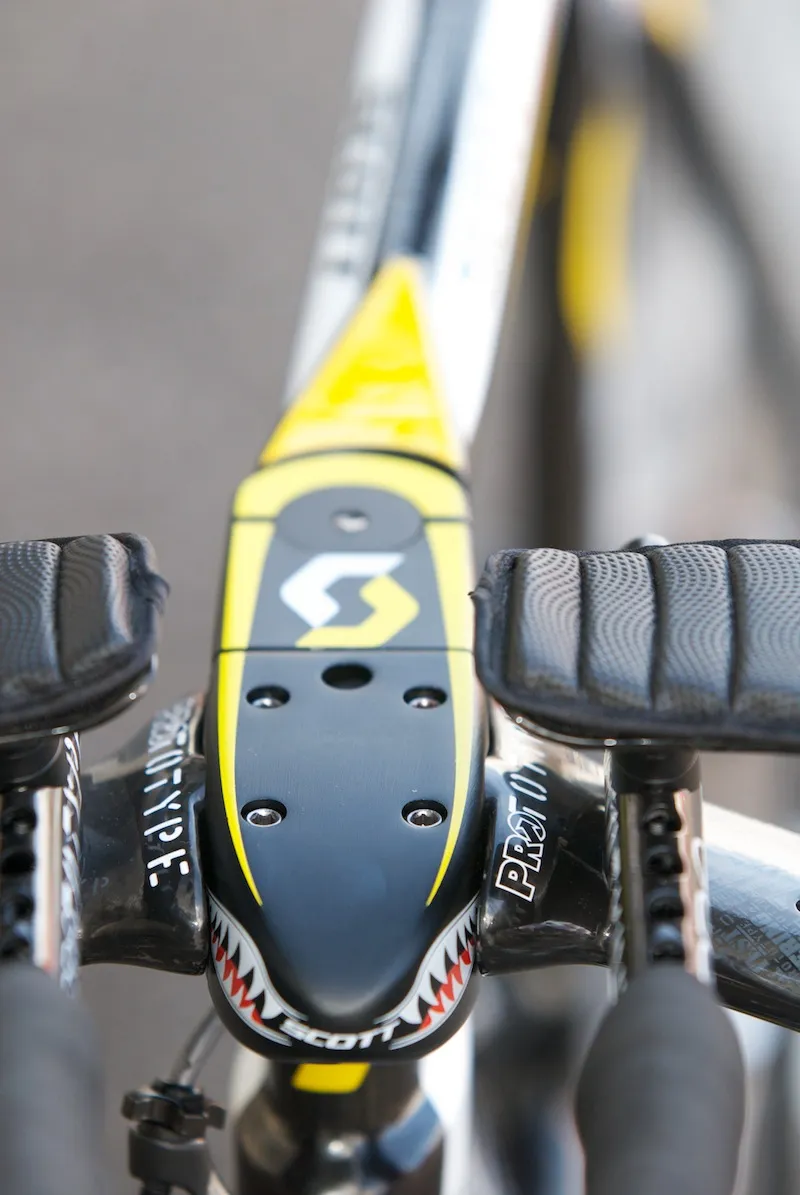
The stem encases all the cabling
The stem itself is another nice piece of integrated design. Its top surface is flat and lies perfectly flush with the Plasma's top tube, meaning that air should pass more smoothly from the front to the back of the bike. The trade-off is that the handlebar extensions need to be raised to accommodate a 'normal' flat torso time trial position.
You can see from the photos that we didn't quite achieve this in our brief first outing, which consisted of a few laps around Brands Hatch. Obviously we need to keep hold of the bike for, er, several months to make sure we get everything dialled in. Still, we can confirm that the bike is as quick as it looks and we definitely want to give it a proper test.
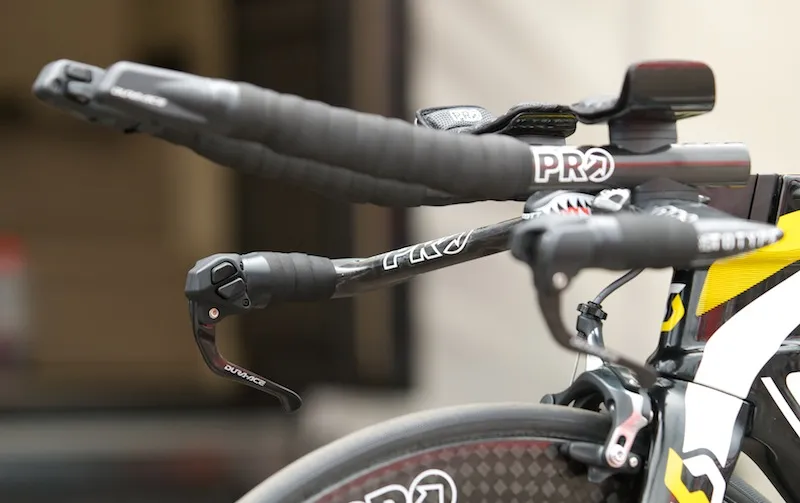
Shifters on the extensions and the bullhorns
We enjoyed the extra options that having two sets of electronic gear shifters gave us: one for the extensions, so that you barely have to move your hands when changing gears, as well as one set on the bull horns, especially useful for when you're climbing out of the saddle and need to shift.
We also liked how the seatpost was incorporated into the bike. It's fully adjustable, which is a good start, and the adjustment bolt is recessed into the top tube for minimum drag. The only minor gripe we had was that the saddle was mounted by a single bolt to the seatpost. In our experience, most (not all) single-bolt clamps have an annoying tendency to move under load unless they're super-tight. We hope this isn't the case here.
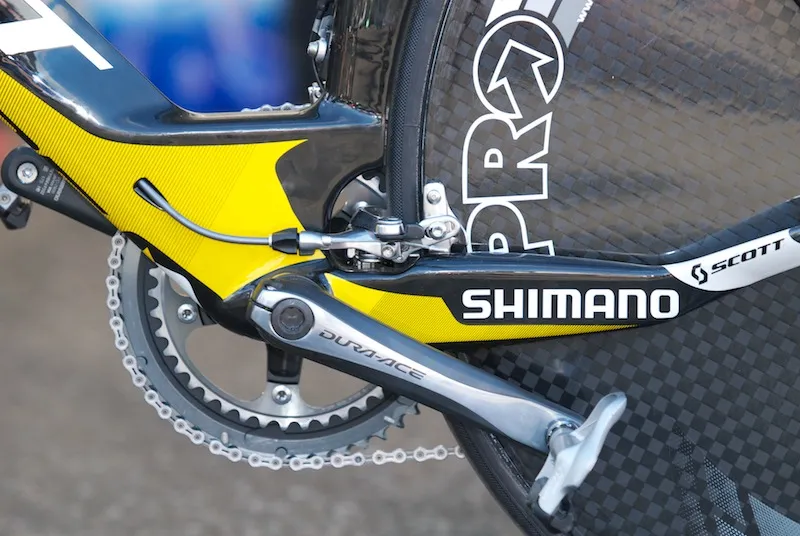
The bottom bracket area: beefed up but also designed to reduce drag
The bottom bracket is beefy and its triangular shape bears some resemblance to Cervelo's P4 with its integrated bottle. But there's no such accessory on the Scott Plasma Ultimate. Instead there's a standard set of bottle cage mounts on the seat tube (none on the down tube though).
The rear brake is mounted to the top of the chainstays and is well shielded by the bottom bracket. This makes it tricky to adjust but at least the cable line is slightly smoother than brakes mounted underneath the bottom bracket, which can cause the stoppers to feel a bit spongy. The chainstays have a kink in them half way along, presumably to further smooth the airflow off the rear end of the bike.
Is it worth £8,000? The answer to that question is up to you, but you can be pretty sure that if you're still slow, it's not the fault of the machine.

